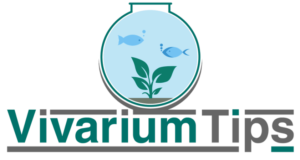For many aquarium owners, a goldfish can mean the entire world to them. There may be unfortunate times when they will notice that their goldfish is acting strange, weird spots on their body, and other unnoticeable effects. One question comes to mind:
“Is it possible that my goldfish is sick?”
In this guide, I will help you identify 15 diseases that your goldfish may potentially have and the possible treatments to care for them. This guide can be applied to other similar fish species.
Goldfish Potential Diseases
This guide will cover the 15 potential diseases that your goldfish might be suffering from.
Below you can find the list of diseases that I’ll be covering.
- Aeromonas/Pseudomonas
- Flavobacterium
- Carp Pox
- Lymphocystis
- Water Mold
- Costia, Chilodonella, Trichodina, Epistylus
- Ich
- Velvet Disease
- Hole-In-The-Head Disease
- Camallanus Worms, Capillaria Worms
- Gill Flukes, Skin Flukes
- Anchor Worms
- Fish Lice
- Lack Of Oxygen
- Poor Water Quality
1. Aeromonas/Pseudomonas
Aeromonas/Pseudomonas is a bacterial infection and is known as an important pathogen amongst fish.
Symptoms
- The symptoms from this disease can cause your fish to have red fins/skin, bulging eyes, swollen abdomen, sored skins, and tattered tail and fins.
Treatment
- Treat your fish by separating the infected or potential infected goldfish and add antibiotics to your fish tank. It’s also recommended to use antibiotic food that is medicated.
Prevention
- The first step you should take when your goldfish has this bacterial infection is to remove and separate from other fish. Keep an eye on the remaining fish in your aquarium tank and separate any other potential sick ones. You can increase your chances of preventing this disease by making sure that your water is in healthy quality.
2. Flavobacterium
Flavobacterium is another type of bacterial infection that can harm a goldfish. They can be found in various environments such as water and even soil.
Symptoms
- The symptoms of flavobacterium can sometimes cause a goldfish or any other fish to have fuzzy spots on their skin or even mouth.
Treatment
- To treat this disease, you should immediately remove your goldfish and separate it from your fish tank. Start using medicated antibiotic meals for your tank as well as adding antibiotics to your tank.
Prevention
- Exactly like Aeromonas, you should keep the water of your tank in healthy condition and immediately remove your sick goldfish from the tank.
3. Carp Pox
Carp pox is another disease that is quite common and mainly spread amongst carps and minnows. This type of disease is known to be caused by a type of herpes virus.
Symptoms
- The symptoms of carp pox are typically bumpy growths on the fish’s skin and its fins.
Treatment
- The treatment for carp pox is to find affected areas and treat them with topical disinfectants. It’s recommended that you add a Formalin solution to your aquarium tank as well.
Prevention
- To prevent this problem, you should avoid adding the water your new fish comes in from. You should keep your new fish separated and use medicated meals for the fish.
4. Lymphocystis
Lymphocystis is another type of common disease that spreads in both saltwater and freshwater. This viral infectious disease belongs to the family of Iridoviridae.
Symptoms
- The symptoms of Lymphocystis are white pimple-looking on the fish’s skin and possibility even their fins.
Treatment
- The treatment is similar to carp pox. You will have to locate affected places and treat them with topical disinfectant. Don’t forget to add Formalin to your tank.
Prevention
- To decrease the chances of having Lymphocystis, do not use water from your new fish. Keep them separate from each other first. You should keep an eye out and make sure to not feed live food that are potentially contaminated. Instead, feed them medicated food.
5. Water Mold
Water mold is known as fungi that can grow fish or almost anything in an aquarium tank, water, or pond.
Symptoms
- The symptoms of water mold for your fish is having cotton-looking “hair” growing on your fish or fish food.
Treatment
- To treat this disease, you should treat your aquarium water with Methylene Blue, Acriflavine, Victoria Green, or Malachite Green.
Prevention
- To help prevent this, you should handle your infected goldfish safely and gently to ensure that you’re not hurting its skin. Try to keep the temperature of your tank at a balanced level and keep your water in a healthy condition.
6. Costia, Chilodonella, Trichodina, Epistylus
Costia and the other three listed in the title are a type of parasite disease that’s normally in cold water.
Symptoms
- The symptoms of these parasites in a fish can be grayish or white “slime” on your fish’s skin, fins being clamped, the increase of gill movements, or finding that your fish is lying on the bottom of your tank.
Treatment
- As for the treatment of this disease, make sure that you add a Formalin solution to the water. You should also check out Acriflavine, copper sulfate, or Malachite Green.
Prevention
- You should avoid adding the water your new fish comes in. Instead, separate the fish and feed it medicated food until it’s ready.
7. Ich
Another disease that your fish may have is ich. Another term that’s commonly used for this disease is ick.
Symptoms
- The symptoms of ich on a fish can be white spots on the fish’s body/fins. If you notice your fish is scraping its body against rocks or other stuff in your tank, then there’s a possibility that your fish is dealing with ich.
Treatment
- To treat ich, make sure to add Acriflavine, copper sulfate, Malachite Green, or Formalin.
Prevention
- You can prevent this by separating your new fish with your fish tank and make sure to not use the water from your new fish.
8. Velvet Disease
Another fish disease is called velvet disease, which is caused by parasites.
Symptoms
- You can recognize the symptoms of velvet disease when you notice there are golden spots on the skin of your fish.
Treatment
- To treat velvet disease, make sure that you treat your aquarium water with copper sulfate.
Prevention
- To prevent this, don’t immediately add your new fish to your fish tank. Separate your new fish and don’t reuse the water that your new fish is in.
9. Hole-In-The-Head Disease
The hole-in-the-head disease is known as Hexamita, which is parasitic and can be spread in saltwater or freshwater.
Symptoms
- You can recognize the disease if your fish has spots on its back or at the top of its head.
Treatment
- To treat this disease, it’s advised that you should feed your fish any food that has Metronidazole.
Prevention
- To prevent this, don’t immediately add your new fish to your fish tank. Separate your new fish and don’t reuse the water that your new fish is in.
10. Camallanus Worms, Capillaria Worms
The Camallanus Worms or Capillaria Worms are known to be common parasites that can cause harm to a huge range of species.
Symptoms
- You can recognize the symptoms of the Camallanus Worms/Capillaria Worms when your fish is experiencing weight loss and if you’re noticing poor growth.
Treatment
- You can treat this disease by adding Levamisole to your fish’s food and make sure that you feed medicated meals that are anti-parasite.
Prevention
- To prevent this, don’t immediately add your new fish to your fish tank. Separate your new fish and don’t reuse the water that your new fish is in. It’s also recommended that you should avoid feeding them live food that is possibly contaminated.
11. Gill Flukes, Skin Flukes
Another type of parasite is known as gill/skin flukes. They are often found in the gills of a fish.
Symptoms
- To spot this disease on a fish, you will have to recognize if your fish has inflamed gills, mucus on your fish’s skin, and if you notice any behaviors like your fish scraping against rocks or other materials in the tank.
Treatment
- You can treat this by adding Praziquantel to your aquarium tank and feeding your fish with medicated anti-parasite food.
Prevention
- You can avoid this problem by not adding water from your new fish and quarantine them before taking any further steps.
12. Anchor Worms
Known as copepod parasites, anchor worms will attach themselves to your fish’s scales.
Symptoms
- To recognize the symptoms of anchor worms, you have to see if your fish has a grayish/white worm-looking parasites on the skin of your fish.
Treatment
- You can treat it by carefully taking out your fish and removing any parasites that are visible using tools like tweezers. Another step to take is to add Trichlorfon or Dimilin to the water of your tank.
Prevention
- When you have a new fish, don’t reuse the water from the new fish. Instead, quarantine the fish until it’s ready to be placed with your aquarium tank.
13. Fish Lice
Fish lice are another type of parasite that can appear in freshwater and saltwater environments. The scientific term for fish lice is known as Argulus japonicus.
Symptoms
- To recognize the symptoms of fish lice, you can check if your fish has tiny moving specks around your fish or if it’s in the water of your aquarium tank.
Treatment
- You can treat it by adding Trichlorfon or Dimilin to your aquarium water.
Prevention
- To reduce the chance of this disease entering your tank, make sure that you don’t reuse water when adding a new fish to your tank.
14. Lack Of Oxygen
Sometimes, having unhealthy water and a bad filter can reduce the oxygen available for your fish.
Symptoms
- With the lack of oxygen, you’ll notice that your goldfish stay near the top of the water to gulp for air and you’ll also notice quick gill movements.
Treatment
- The treatment is simple. Make sure that you have a working filter and change your tank water if necessary.
Prevention
- You can ease and provide oxygen for your fish by keeping the water filter running strong, using air stones, and pump for your tank.
15. Poor Water Quality
You should always keep your water quality in a healthy condition. This can harm your fish in numerous ways.
Symptoms
- The symptoms for poor water quality cause your goldfish to have rapid movements when it comes to their gills, gills that are inflamed, mucus, fins clamping, and you’ll find that your fish will lie at the bottom of your aquarium. Sometimes, this can cause the death of many fish in that same aquarium.
Treatment
- To treat your water and ensuring better quality for your fish, treat your tank water with ammonia remover. Find other products that can improve the quality of water in your tank.
Prevention
- You can prevent this by constantly testing the quality of your water, using a filter, and changing the water when it’s necessary.
From VivariumTips,
If you have any additional questions about goldfish diseases, feel free to comment below and I’ll try to help you in the best possible way.
For other aquarium articles, be sure to check out:

